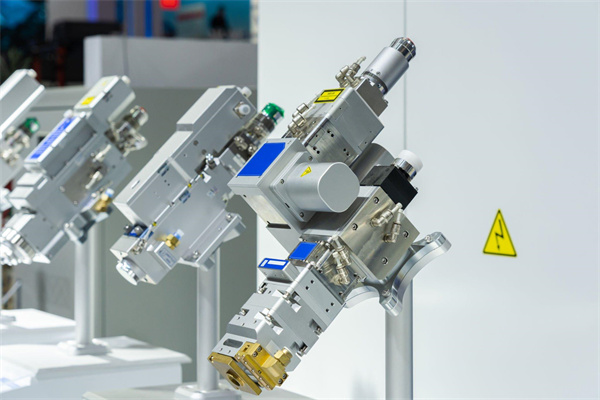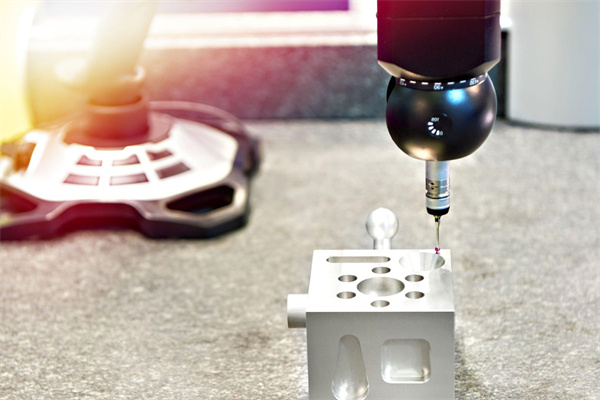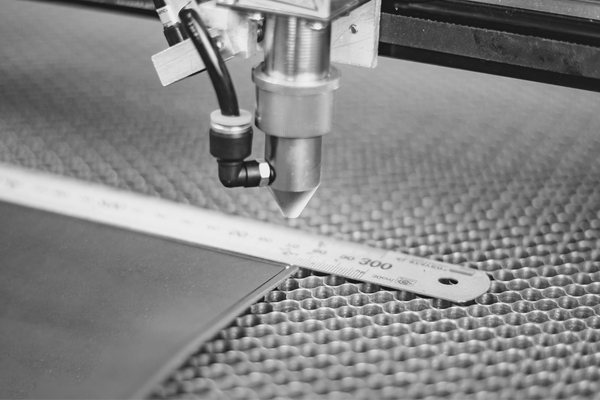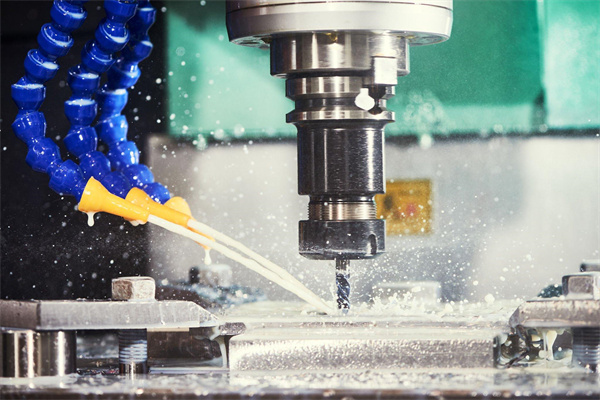[lwptoc]
What is a CNC Machine
A Computer Numerical Control (CNC) machine is automated machinery used in industrial and small-scale manufacturing settings. CNC machines are highly precise, programmable machines that cut and shape materials such as plastics, metals, glass, ceramic, and foam. CNC machines often produce parts for cars, airplanes, medical devices, consumer electronics, and other products.
CNC machines work by taking instructions from a computer and using them to guide the movement of cutting tools or other hardware components. The instructions tell the tools where to move and how deep to cut into the material being worked with. CNC machines can be programmed manually or with software programs like CAD/CAM (Computer Aided Design/Computer Aided Manufacturing).
Get the complete solution. ↓
When it comes to the number of axes a CNC machine can have, it depends on the specific model and what features it offers. Generally speaking, most CNC machines have three axes (X, Y, and Z) that can move independently of each other in all directions. Additionally, some models may also offer additional axes such as rotary (A & B), tilt (T), or spindle rotation (S).
More axes allow for more complex machining operations than traditional milling equipment, limited to three linear motions along X-, Y- & Z-axes. This means that CNC machines can produce more intricate shapes than could be achieved with manual machining. For example, there is no way a manual milling machine could achieve the same level of detail as one with 5 axes; they wouldn’t be able to access certain angles or depths required for certain shapes without adding additional parts or fixtures, which would add complexity and cost to production processes.
In conclusion, how many axes a CNC machine has depends on the specific model; generally speaking, you will find most common models having 3 linear axes – X, Y & Z – plus an extra rotary/tilt/spindle rotation axis, depending on what your application requires. As an added benefit of having extra axis capabilities, you can execute complex machining operations quickly and accurately while reducing costs associated with manual labor processes.
How Many Axes Can a Cnc Machine Have
When it comes to CNC machines, one of the most important questions is: How many axes can a CNC machine have? This is important to consider when determining which CNC machine is right for your particular application. The answer to this question depends on the CNC machine type and how many different components it must control.
In the simplest terms, a CNC machine has two main parts: the controller and the cutting tool. The controller controls all aspects of the machine’s operation, including its movements, positioning, and speeds. The cutting tool is what cuts the material being worked on.
The number of axes a CNC machine can have depends on its specific design and capabilities. Generally speaking, CNC machines are classified as either two-axis or four-axis machines. Two-axis machines are limited in their ability to move along multiple directions simultaneously; they can only move along two linear axes (X and Y). Four-axis machines are more versatile; they can move along three linear (X, Y, and Z) axes and rotate around a fourth axis (A).
Some advanced CNC systems also feature five-axis capability. These systems can simultaneously move along three linear axes (X, Y, and Z) plus two rotaries (A and B) axes, allowing for incredibly precise milling operations. Five-axis capability is incredibly valuable for complex machining operations such as sculpting curved surfaces or creating intricate shapes with compound angles.
No matter which type of CNC system you choose — whether it be two-, four-, or five-axes — it’s important to understand each system’s capabilities before making your final decision. In doing so, you can ensure that you get a CNC system that meets your needs perfectly while providing maximum precision and efficiency throughout your production process.
Advantages of Having Multiple Axes on a CNC Machine
With CNC machines, having multiple axes can be a huge advantage. This blog post will explore why multiple axes are beneficial and their advantages to CNC machine operators. We’ll also look at how many axes a CNC machine can have and the different kinds of axes that are available.
One of the most obvious advantages of having multiple axes on a CNC machine is the ability to produce complex parts with minimal time and effort. By having an extra axis or two, you can achieve precision that would otherwise be impossible. For example, with a double-axis or triple-axis system, you could create parts with intricate curves or profiles in a fraction of the time it would take with a single-axis system. This means less machining and more time spent designing and creating innovative parts.
Another benefit of multiple axes is increased flexibility when machining materials with unique characteristics. For instance, if you’re working on titanium, aluminum, or brass – materials that often require varying speeds and specialized cutting tools – then having multiple axes can help you cut these much more effectively than with only one axis. You can also use multiple axes to accommodate special shapes in your workpieces that single-axis systems may not be able to deliver independently.
So how many axes can a CNC machine have? The number of axes depends on your machine type; some machines may be limited to two or three, while others may support up to five or six-axis systems. Generally speaking, there are three main types of motion in CNC machines: linear motion (X/Y/Z), rotational motion (A/B/C), and tilt motion (T). Each axis requires its motor and encoder for precise control over each movement.
In addition to the number of available axes, several axial configurations can provide greater accuracy during machining operations. One such configuration is referred to as “tandem repeat,” where two separate sets of motions are repeated side by side along one axis to minimize errors within one cycle; this is especially useful when tightening tolerances on small parts like screws and bolts. Another common axial configuration is “parallel repeat,” which utilizes two separate motors along the same axis to reduce vibrations while still providing precision control over movements; this configuration is ideal for high-speed applications where accuracy must be maintained at all times.
Given all these benefits, having multiple axes on your CNC machine offers significant advantages over single-axis systems alone. They allow you to produce complex parts faster and more accurately, give you greater flexibility when machining specialty materials like titanium or brass, and accommodate unusual shapes in your workpieces. Furthermore, depending on your particular model, various axial configurations enable even higher levels of precision, such as tandem repeat and parallel repeat options for tighter tolerances on smaller components like screws and bolts. Overall, multiple axe systems offer numerous benefits for any serious shop looking for maximum efficiency from their machines!
Disadvantages of Having Multiple Axes on a CNC Machine
When it comes to CNC machining, the number of axes a machine can have dramatically affected the accuracy and quality of each job. It’s imporUnderstandingtages and disadvantages of having multiple axes on a CNC machine before decis important iding how many axes are right for your project. In this blog post, we’ll dive into some of the major disadvantages of having multiple axes on a CNC machine so you can decide what you need.
The increased complexity is one major disadvantage of having multiple axes on a CNC machine. For example, if you want to control more than three or four axes at once, you’ll need to use complex compa other programming languages like G code. Additionally, machines with more than three or four axes often require additional components like motors and controllers, adding another layer of complexity to the setup.
Another disadvantage is that machines with too many axes can be difficult to set up and calibrate. As the number of axes increases, so does time required for calibration and setup. This means longer wait times between projects, especially if technical issues need resolving throughout the process. This leads to decreased productivity overall since jobs will take much longer when working with multiple axed machines due to setup time alone.
Another issue is that too many axes can add unnecessary weight and bulkiness to a CNC machine which makes it harder to move between different job sites or workshops where work needs to be done. In addition, dealing with large and heavy pieces while working on multi-axe machines becomes increasingly difficult and dangerous because larger parts tend to shift unexpectedly and can cause serious injuries if not handled properly by experienced workers who know what they are doing. With fewer axes, fewer chances for damage exist due to fewer moving pieces being involved in any operation completed by operators on-site during production scenarios.
Finally, having too many axes also axes additional strain on a CNC machine’s motors which dec, decreasing the pan over time. This means that eventually, your machine will need more maintenance or even replacement at some point down the line if too many axes are running simultaneously without proper rest times between operations being taken into account by users who may be inexperienced or simply ignorant of best practices as related specifically with their particular model in question as they develop their workflow patterns online over time into their personal preferences setting related requirements accordingly based off their specific application needs concerning types of materials used per job scenario out in the field today currently being done manually vs. what would happen if those same tasks were attempted utilizing automated services online instead (which tends usually cost significantly more money upfront but longterm save businesses & individuals significant amounts of time download).
All in all, understanding how many axes a CNC Machine has should be your priority before deciding whether you want one with multiple axles or not based on whatever needs about your specific project circumstances might be necessary for ultimate success when considering all other factors included within each equation presented before committing & purchasing such expensive equipment for operations within particular industries outside typical everyday use cases & scenarios across various areas worldwide currently existing still today mostly found within central locations near metallic manufacturing facilities such as those located within traditional industrialized zones around certain parts inside cities all across planet Earth today.
Which Type of Business Would Benefit from Having Multiple Axes on Their Cnc Machine
The number of axes along which they can move is an important factor when it comes to CNC machines. Generally speaking, the more axes a machine has, the more it can do — and that’s why having multiple axes on a CNC machine can benefit businesses. So how many axes can a CNC machine have?
The answer depends on the specific type of CNC machine. There are five main axes: linear axes, circular-interpolation axes, rotary/tilting axes, swiveling/tilting-rotary axes, and articulated-arm axes. Linear and circular interpolation are the most common types of motion used in CNC machines; combined cover almost all applications involving 3D machining operations. The other three kinds of motion are used mainly when special applications require them.
Now that we know what kinds of motion are available with a CNC machine, let’s look at which businesses might benefit from having multiple axes on their machines. For example, aerospace manufacturers and medical device producers often need precise machining operations that require all five types of motion. On the other hand, if you run a small shop making customized parts or components for clients or hobbyists, you may only need two or three axes since most applications won’t involve complex machining operations requiring all five types of motion.
Having multiple axes on a CNC machine also allows manufacturers to work faster and produce higher quality results than traditional methods because it enables them to complete more complicated processes in fewer steps. Additionally, having multiple axes means that the same piece can be worked on from different angles without stopping and repositioning the workpiece — saving time and money in production costs and improving accuracy and precision.
Finally, adding additional features like automated pallet changers or tool changers to your CNC machine will allow you to take full advantage of its capabilities by providing easy access to tools during long-running jobs or allowing you to produce multiple parts simultaneously without any interruption in production time due to manual handling processes.
Overall, having multiple axes on your CNC machine is invaluable for businesses that want to increase production efficiency and accuracy while decreasing costs and downtime associated with manual machining processes. Whether you’re producing custom parts for commercial use or specialized components for high-tech industries such as aerospace or medical device manufacturing — investing in a multi-axis CNC machine could be an excellent way to ensure your business remains competitive in today’s market!
How to Determine if Your Business Needs Multiple Axes on Their Cnc Machine
Whether you are a hobbyist or a business owner, it can be difficult to decide how many axes a CNC machine should have. With so many options out there, it is important to understand what each axis does and how it can affect your results. This article will discuss the differences between single-axis and multi-axis CNC machines, what types of projects require multiple axes, and how to determine if your business needs multiple axes on its CNC machine.
The single-axis machine is the most basic type of CNC machine, which only moves in one direction. This machine is suitable for simple shapes and parts that do not require complex geometries. Single-axis CNC machines are ideal for hobbyists or businesses with limited budgets since they are less expensive than multi-axis machines.
Multi-axis machines, on the other hand, can move in three or more directions, such as up/down/left/right or even circular movements. This makes them much more versatile than single-axis machines and allows them to produce complex parts and pieces quickly and accurately. They are also great for producing parts with intricate details, such as drill holes or threads. While multi-axis machines are more expensive than single-axis machines, they provide greater flexibility when producing complex parts and pieces.
So how do you know if your business needs multiple axes? Plan on producing large numbers of complex parts for commercial use or need high accuracy for precise measurements. A multi-axis CNC machine may be necessary for your production process. Multi-axes machines are also ideal if you want to use CAD software or if your project requires 3D machining processes such as milling arcs without manually entering coordinates into the system. On the other hand, if you’re only creating small projects frequently, then a single-axis may suffice since it is cheaper and simpler to use than multi-axe models.
Whether your business needs multiple axes depends on several factors, including budget constraints, project complexity, and desired accuracy levels for measurements. We recommend considering all these factors before making an informed decision that best suits your needs.











